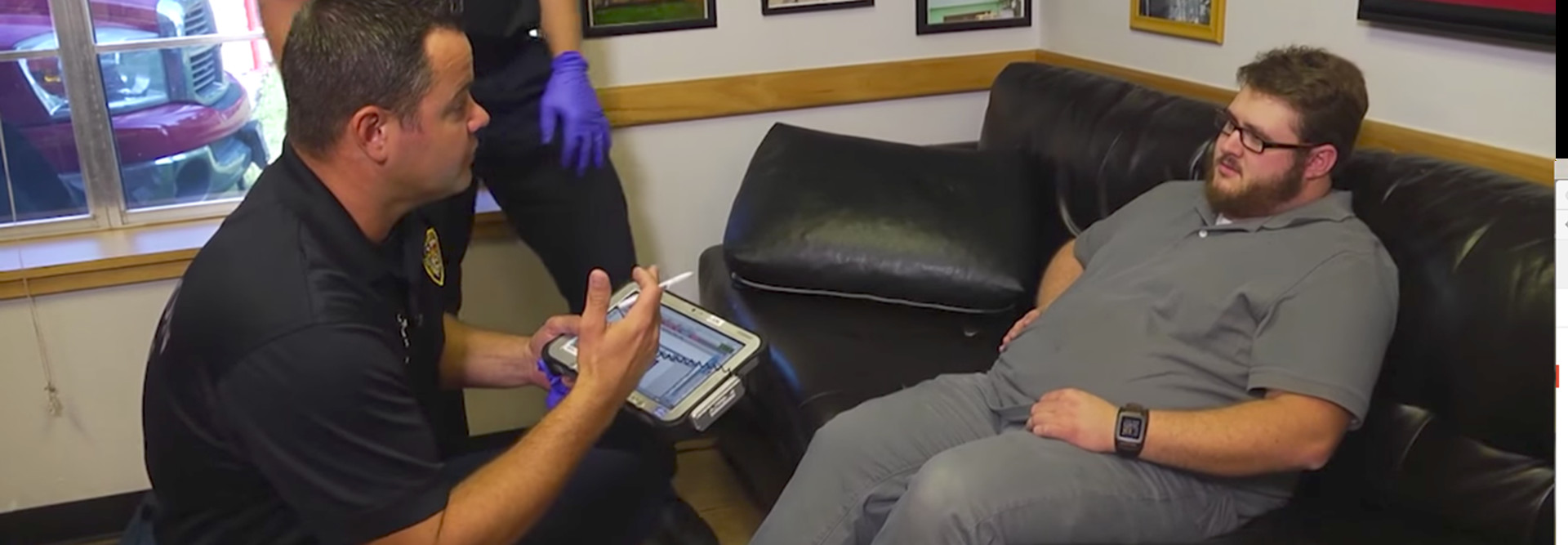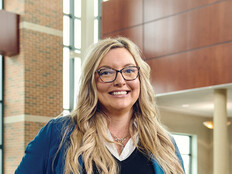Houston's Mobile Telehealth Service Helps First Responders Streamline Care
After Hurricane Harvey hit Houston, the city’s medical response resources were stretched thin.
Luckily, the Houston Fire Department already had the technology in place to make the best use of its emergency medical resources.
How? Through its Emergency TeleHealth and Navigation program, or ETHAN, a tablet-based telemedicine service that uses Cisco Systems’ videoconferencing technology to allow patients and on-site emergency medical technicians to instantaneously video chat with physicians. The physicians can then determine the most appropriate medical care solution for a patient and help the patient schedule and reach an appointment within a single dashboard.
This often means helping patients with less-severe issues find their way to a clinic or emergency room via a cab, while reserving ambulances or fire resources for the most critical patients.
“After the storm, when the roads became more navigable and most cabs came back online, ETHAN played a critical role in freeing up other fire department apparatuses to be able to respond to water emergencies,” says Michael Gonzalez, associate medical director for the HFD. “The ambulances are already the unit that is in shortest supply for us on a regular day. If the ambulance can be spared from transporting a patient that can be safely transported and treated by another entity, the ambulance can be sent to help treat and transport a more critical patient.”
SIGN UP: Get more news from the HealthTech newsletter in your inbox every two weeks
Houston Pioneers an Emergency Telehealth Service
While it proved an invaluable resource in the aftermath of Hurricane Harvey, ETHAN has been helping to augment and streamline care for city residents who call for emergency services since 2014.
Four years ago, with 911 calls in urban areas on the rise, many of which did not require emergency transportation to the ER, the 4,000-member strong Houston Fire Department set out to develop a system that could help to determine nonemergency calls and provide alternate transport.
“At the time, the telehealth capabilities that we have today didn’t exist,” says Gonzalez. “When we came to our industry partners in 2013 and told them that this was something we wanted to do, no one had done anything like it. With them, we really built an infrastructure from scratch.”
While it was a challenge, the collaboration with local and industry partners made the telehealth service possible. And now, every ambulance and fire truck unit in the field are equipped with the ETHAN capability via the same Panasonic Toughpad rugged tablet that first responders use for other capabilities, like completing medical records or searching maps.
“When we were designing ETHAN, we wanted to ensure we could operate the program and make the telehealth connection on a device that they already use and carry every day. They already have several bags and pieces of equipment, and so it was really important that we didn’t saddle them with another device that needs to be charged or secured inside of the vehicle that they had to remember to grab.”
Telehealth and EMTs Work Together to Streamline Care
Now, with the solution up and running across the nearly 660 square miles serviced by the HFD, first responders can work with physicians to determine a course of treatment that, more often than not, does not require emergency transport to the ER.
“During training, we really try to press the point that they should use ETHAN only when they would feel comfortable having their own family member in the same situation seek treatment outside of the emergency room,” explains Gonzalez. “If they think that is true, they activate ETHAN by turning on the tablet and dialing the physician. The telehealth-trained physician on the other end answers the call. They will speak briefly with the crew, who provides a very short summary of what is happening with the patient on scene, and then they try to get the patient in front of the physician as quickly as possible.”
From there, the physician speaks directly to the patient using Jabber technology and can call on the EMT to assist with a closer inspection if necessary. With all that information, the physician looks to determine whether it is appropriate to provide the patient with treatment other than an ER visit. If so, the physician can work with the patient to schedule an appointment at a clinic within 24 hours and can even call a cab to bring the patient to the hospital or clinic, all within the program itself and at no cost to the patient.
“On a regular day, we use cabs in about 80 percent of the calls,” says Gonzalez. And along with that, just 15 percent of patients that engage with physicians via the ETHAN program end up requiring emergency transportation to the ER. Thus far, the ETHAN program has serviced more than 12,300 people.
For cities or fire departments looking to launch their own telehealth program, Gonzalez says that having the right partners in place is key.
“First and foremost, success hinges on bringing key partners to the table ahead of time,” he says. “In our case, it was Cisco, Verizon, the health department and various clinics from healthcare organizations within the city. Having that backbone of dedicated, willing partners at the table during the design of the program is absolutely essential.”









